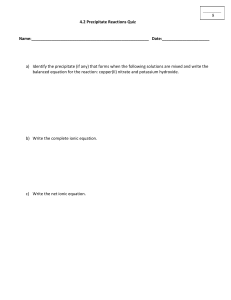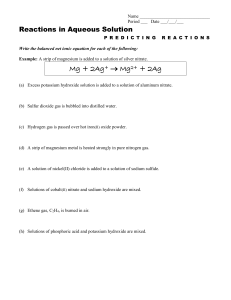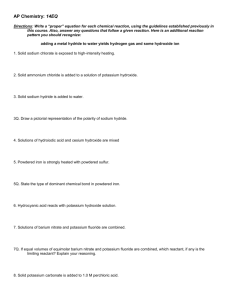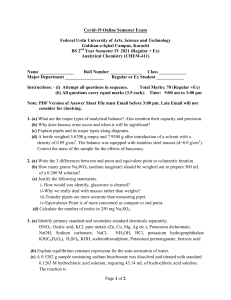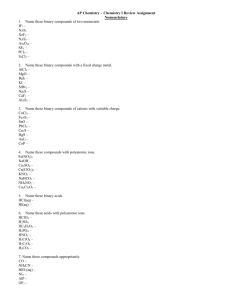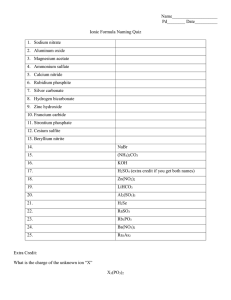WS TWO
advertisement
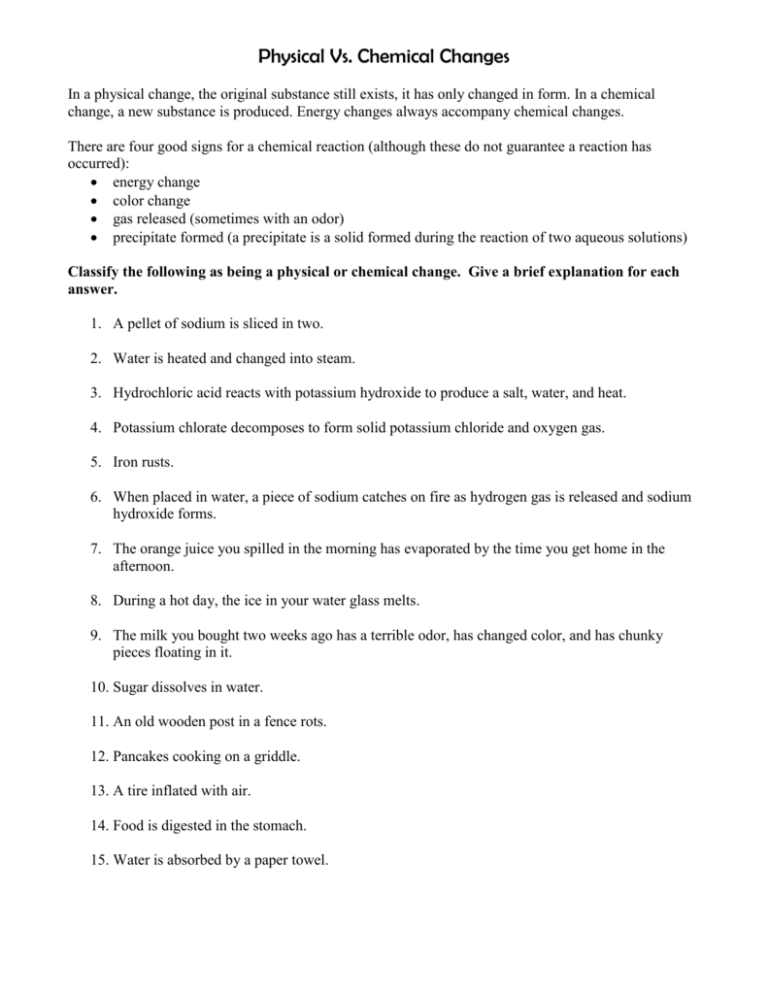
Physical Vs. Chemical Changes In a physical change, the original substance still exists, it has only changed in form. In a chemical change, a new substance is produced. Energy changes always accompany chemical changes. There are four good signs for a chemical reaction (although these do not guarantee a reaction has occurred): energy change color change gas released (sometimes with an odor) precipitate formed (a precipitate is a solid formed during the reaction of two aqueous solutions) Classify the following as being a physical or chemical change. Give a brief explanation for each answer. 1. A pellet of sodium is sliced in two. 2. Water is heated and changed into steam. 3. Hydrochloric acid reacts with potassium hydroxide to produce a salt, water, and heat. 4. Potassium chlorate decomposes to form solid potassium chloride and oxygen gas. 5. Iron rusts. 6. When placed in water, a piece of sodium catches on fire as hydrogen gas is released and sodium hydroxide forms. 7. The orange juice you spilled in the morning has evaporated by the time you get home in the afternoon. 8. During a hot day, the ice in your water glass melts. 9. The milk you bought two weeks ago has a terrible odor, has changed color, and has chunky pieces floating in it. 10. Sugar dissolves in water. 11. An old wooden post in a fence rots. 12. Pancakes cooking on a griddle. 13. A tire inflated with air. 14. Food is digested in the stomach. 15. Water is absorbed by a paper towel.

